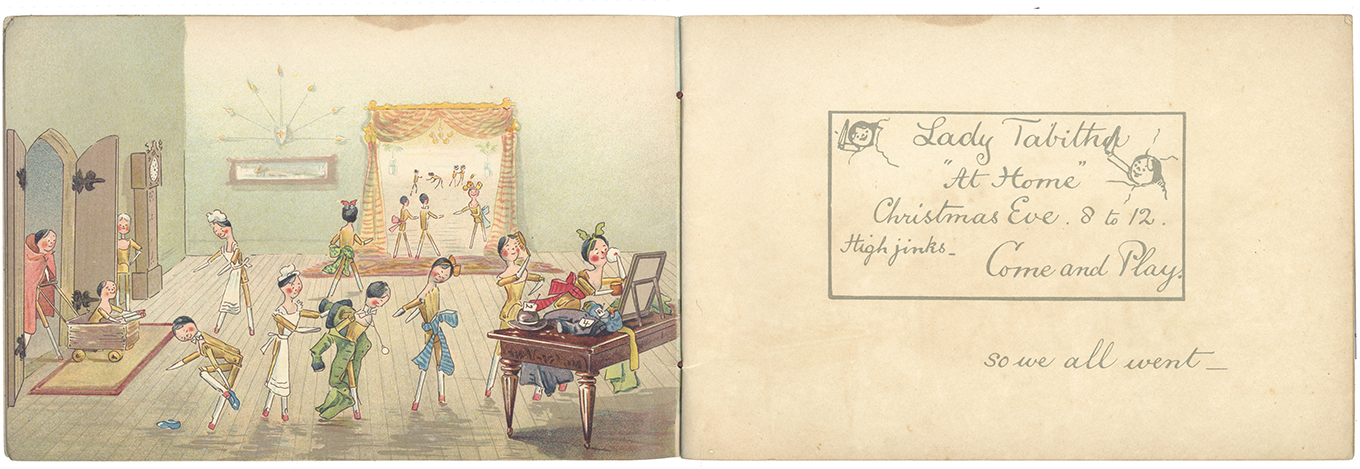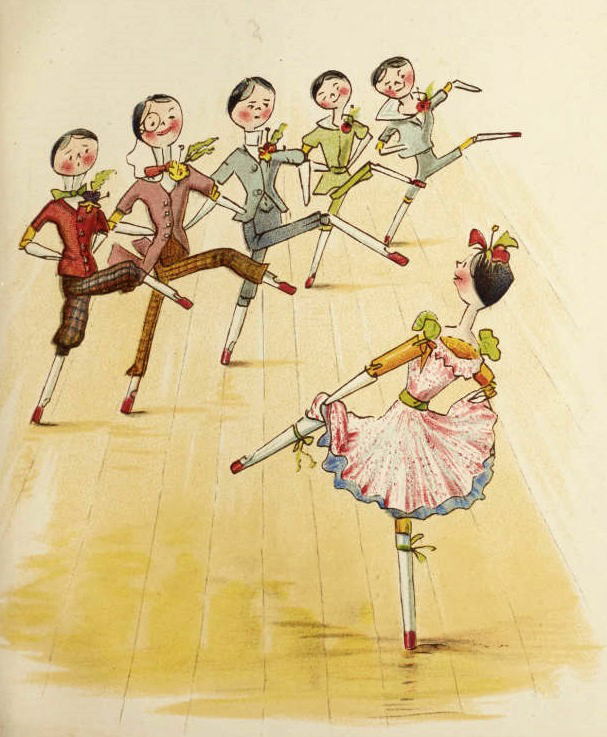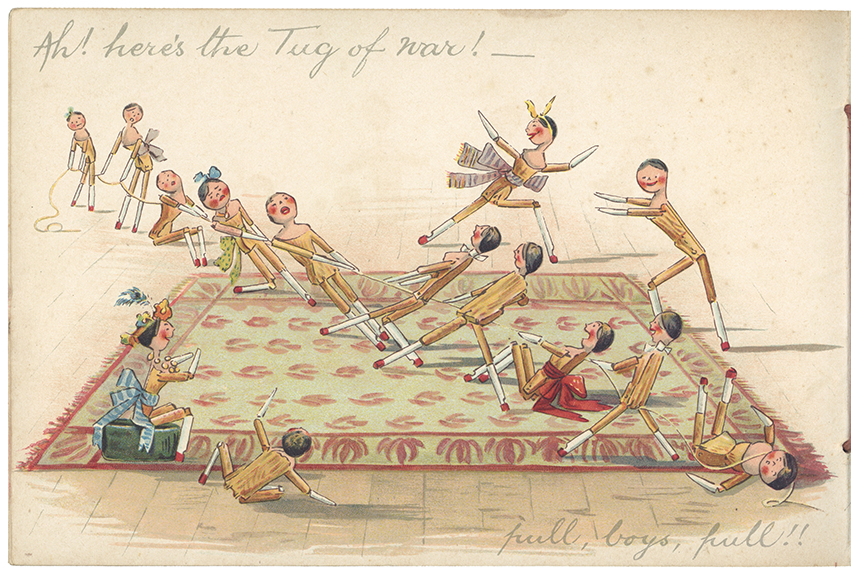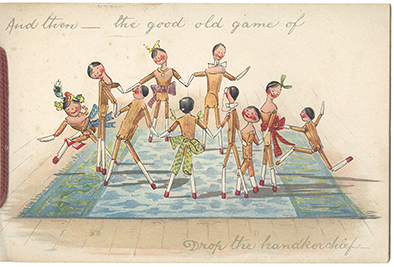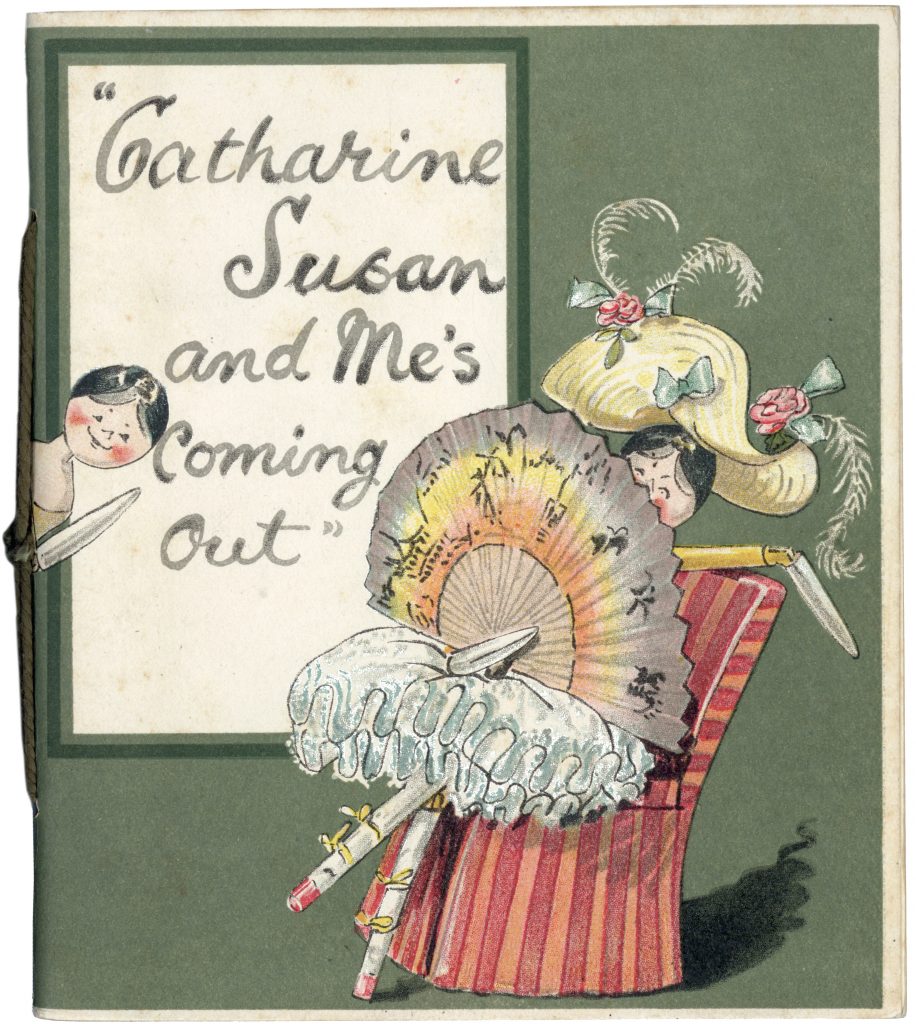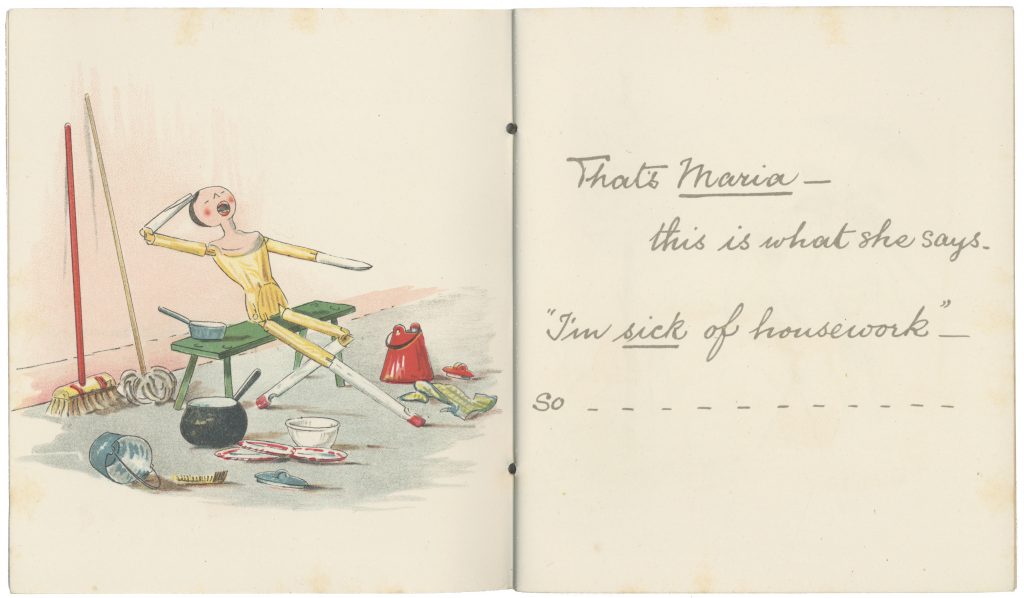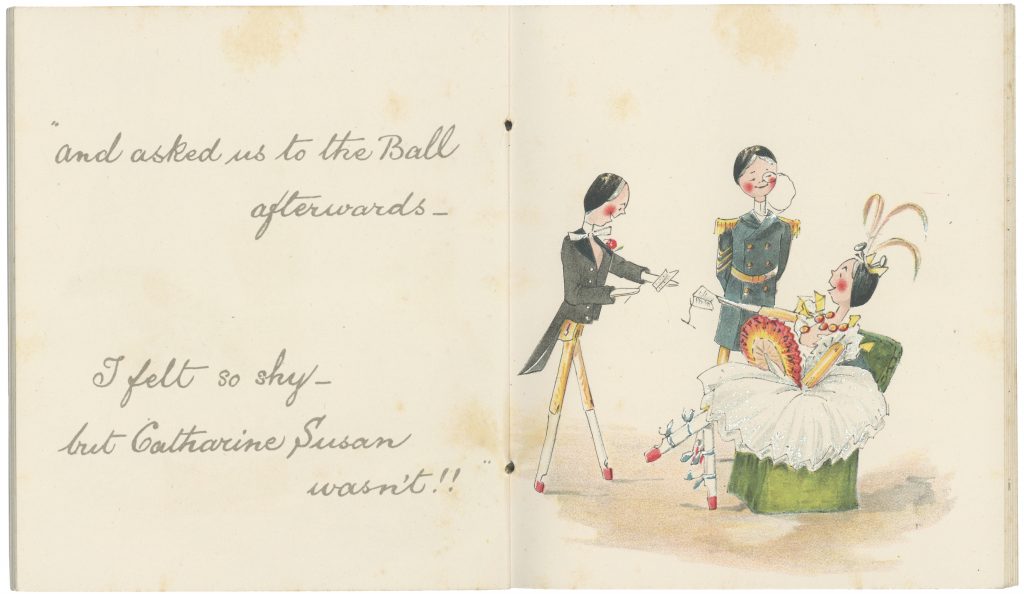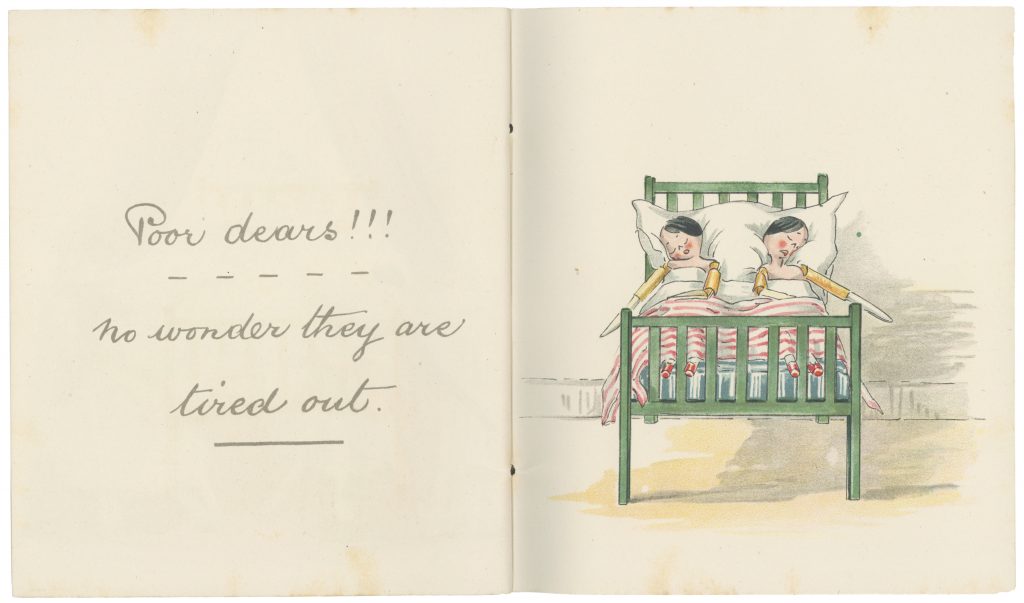Kathleen Ainslie was an illustrator, active in the years 1900-1911. She is best-known for her series of children’s books based on jointed Dutch peg dolls which were popular during the 19th and early-20th centuries (Florence Kate Upton’s The Adventures of Two Dutch Dolls and a Golliwogg had been published in 1895.)
The first of two books that we have recently added to our Rare Books Collection is Catherine Susan and Me’s coming out, published in London by Castell Brothers Ltd. and in New York by Frederick A. Stokes, c.1906 (COPAC lists just one copy, at Cambridge University).
Catherine Susan and Maria are weary of household chores so they issue a public notice to announce that they are ‘coming out’. Their coming out is both in the sense of venturing out on a trip to London and of being presented to society.
Of course, such a momentous occasion requires clothes and the dolls have nothing appropriate to wear. Dutch peg dolls were sold undressed and children made clothes for them from scraps of cloth. Towards the end of the 19th Century, the female silhouette changed rapidly and, certainly in the early 20th Century, styles, designs and fabrics from other cultures had become more influential in fashion. In the haberdashery store, the dolls argue about whether to wear muslin or white satin, both of which were considered stylish at the time. In the 1880s and 1890s, small hats ornamented with birds, feathers and artificial flowers were fashionable. The mischievous dolls chase hens and then secure the feathers to their heads with hammer and nails!
Catherine Susan and Maria squeeze into car and find a warm welcome in London. They are invited to attend a ball – in the 19th and early 20th centuries, numerous balls were held for members of ‘high society’. Debutante balls were occasions at which young women ‘came out’. Fans were essential: not just part of the outfit but a form of non-verbal communication conveying rejection (a closed fan), interest (an open fan) or excitement (a fluttering fan). Catherine Susan isn’t shy and sits with her fan open and, later, dances with a gentleman she tells everyone was a prince.
The dolls go to a polo match. Polo had been imported to England in the 1860s, from India, and its popularity grew in the late 19th and early 20th centuries. Although the dolls exclaim at how fast the horses gallop, British polo was slower and more methodical than the polo played in Manipur. They also try their hands at punting. Punting boats were first built for pleasure in England in the 1860s. Pleasure punting probably started on the River Thames but became increasingly popular in the early 1900s. In the evening, they go to the theatre – although Maria doesn’t remember what they saw, from the balcony scene, it looks as though it might have been Romeo and Juliet. Victorian productions of Shakespeare’s plays often prioritised ‘authentic’ costumes and scenery and to be a bona fide actor/actress, like Henry Irving (1838-1905) or Ellen Terry (1847-1928), was to be a great Shakespearean actor.
By the end of the book, the dolls are both exhausted.
The second book by Kathleen Ainslie that we have added to our Rare Books Collection is What I did, published c.1905 (COPAC lists copies held at the British Library, Manchester University and Oxford University.) Inside the front cover, someone has written in pencil “I hope you will like reading this book. It is very amusing”. This time, the protagonist is a naughty Dutch doll schoolboy and the book recounts his boarding school escapades: fagging (i.e. slaving) for an older boy called Tomkins; swimming; playing cricket; cavorting in the dormitory; and smoking.
We do not currently have any more of Kathleen Ainslie’s Dutch peg doll books but in other stories, Catherine Susan and her companion, Maria, celebrate holidays, take on odd jobs and even agitate for women’s suffrage (Votes for Catherine Susan and Me, 1910). Ainslie wrote about 25 books (the first being Me and Catherine Susan in 1903), as well as illustrating a series of six calendars (1906-1911). They all feature the same brand of humorous chromolithographed illustrations.

